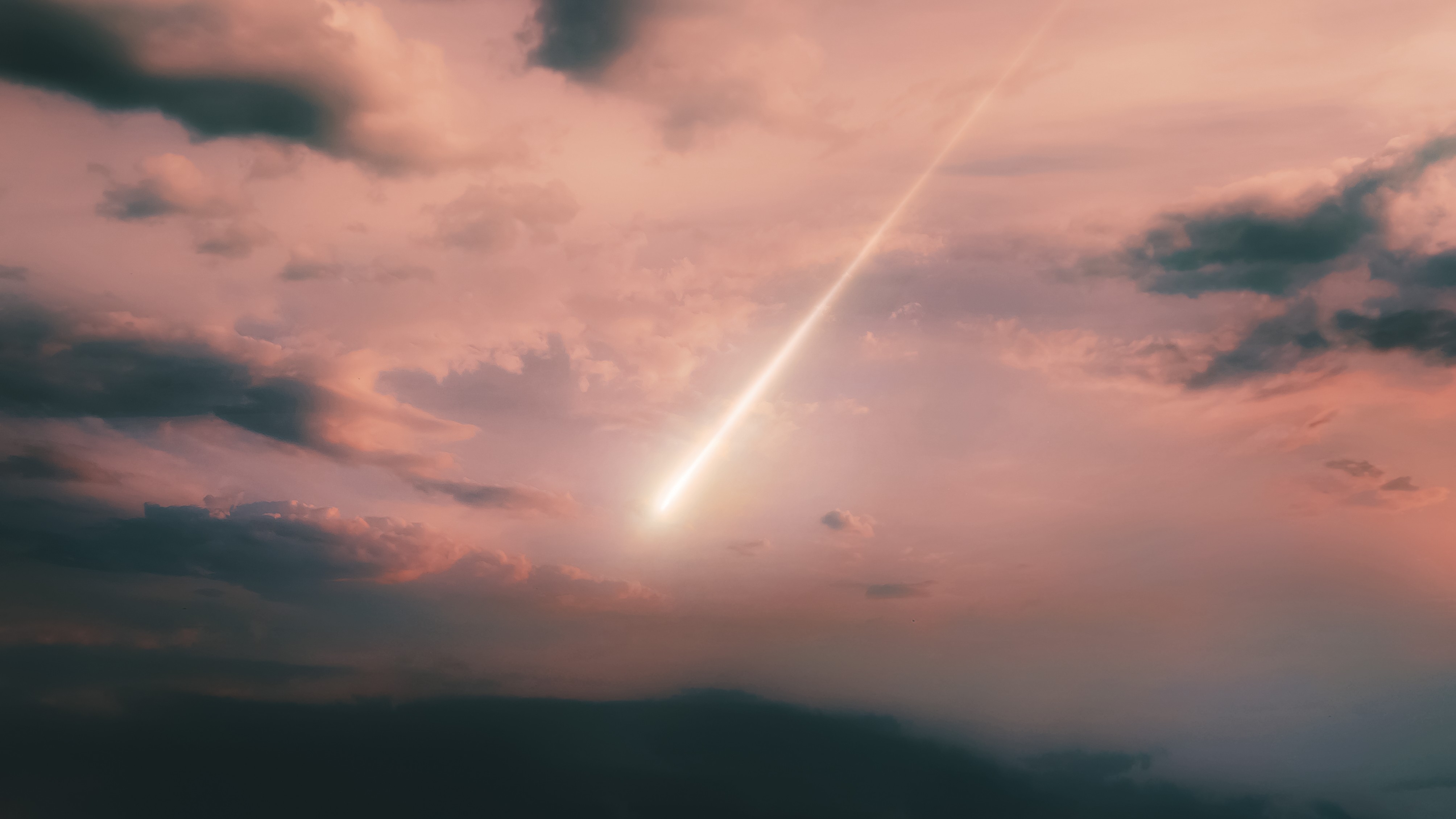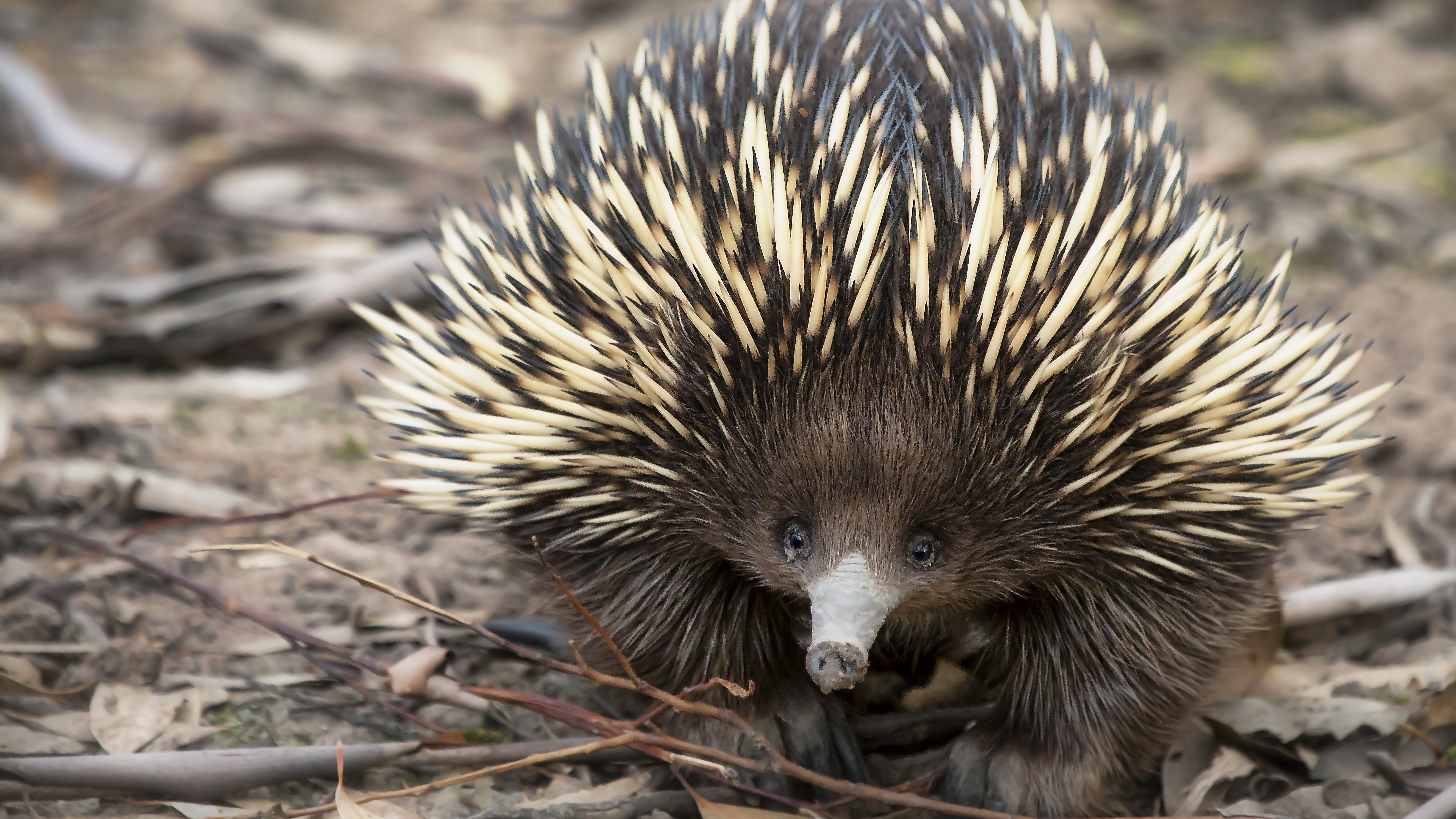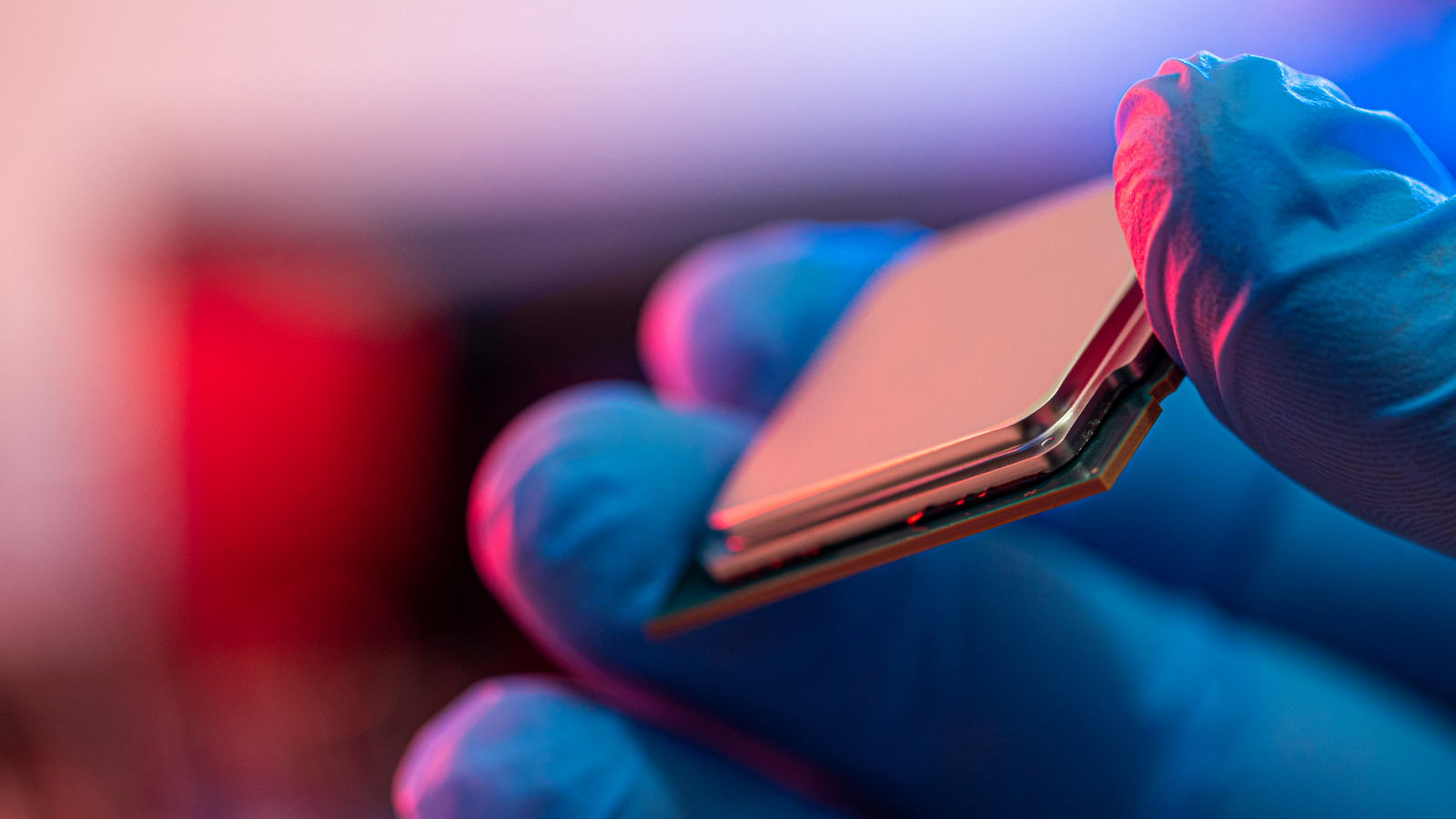Terracotta Warriors Inspired by Ancient Greek Art
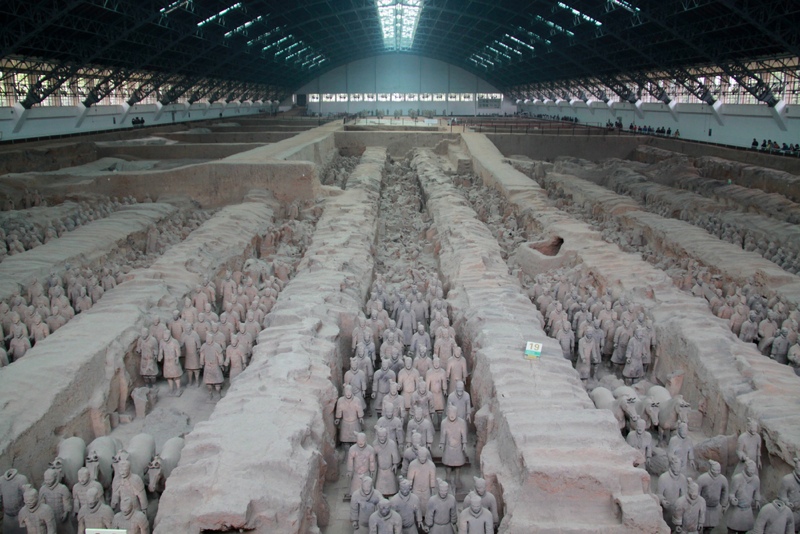
The Terracotta Warriors, along with other life-size sculptures built for the First Emperor of China, were inspired by Greek art, new research indicates.
About 8,000 Terracotta Warriors, which are life-size statues of infantryman, cavalry, archers, charioteers and generals, were buried in three pits less than a mile to the northeast of the mausoleum of Qin Shi Huangdi, the first emperor. He unified the country through conquest more than 2,200 years ago. Pits containing sculptures of acrobats, strongmen, dancers and civil servants have also been found near the mausoleum.
Now, new research points to ancient Greek sculpture as the inspiration for the emperor's afterlife army. [See Photos of the Terracotta Warriors & Greek Art]
"It is perfectly possible and actually likely that the sculptures of the First Emperor are the result of early contact between Greece and China," writes Lukas Nickel, a reader with the School of Oriental and African Studies at the University of London, in the most recent edition of the journal Bulletin of the School of Oriental and African Studies. (A reader is a position comparable to an associate or full professor in the American system.)
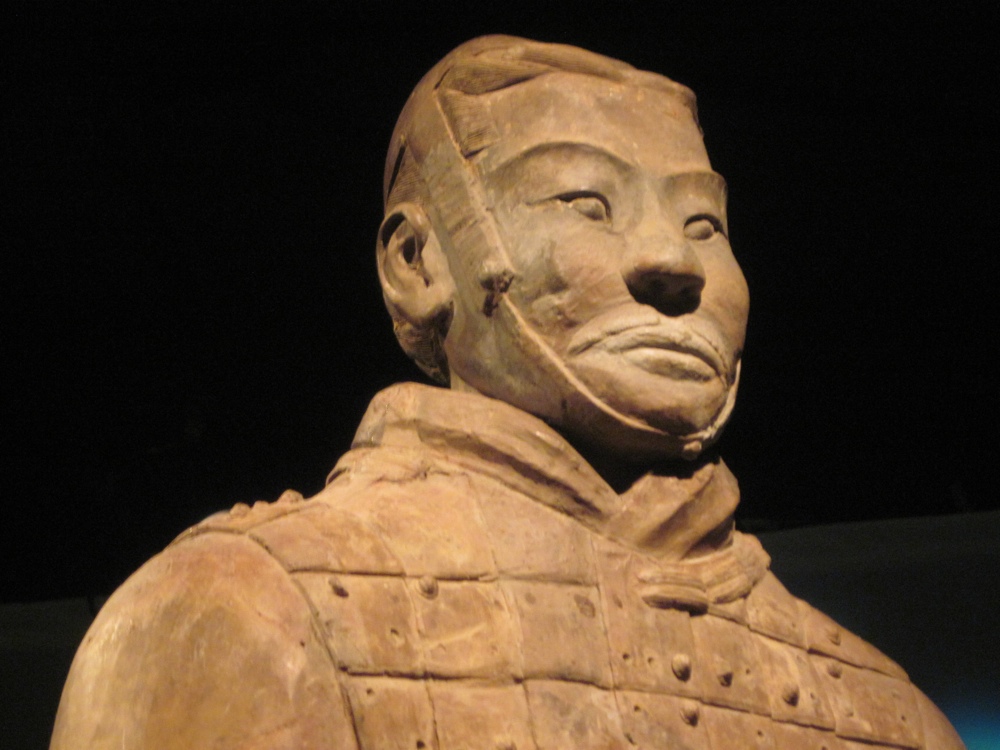
Nickel's evidence includes newly translated ancient records that tell a fantastic tale of giant statues that "appeared" in the far west, inspiring the first emperor of China to duplicate them in front of his palace. This story offers evidence of early contact between China and the West, contacts that Nickel says inspired the First Emperor (which is what Qin Shi Huangdi called himself) to not only duplicate the 12 giant statues but to build the massive Terracotta Army along with other life-size sculptures.
Before the First Emperor's time, life-size sculptures were not built in China, and Nickel argues the idea to build so many of them, so suddenly, came from kingdoms in Asia that had been created and influenced by Alexander the Great's campaigns.
'Giants' appearing in the west
Sign up for the Live Science daily newsletter now
Get the world’s most fascinating discoveries delivered straight to your inbox.
Nickel translated ancient Chinese records that tell a tale of 12 giant statues, clad in "foreign robes" that "appeared" in Lintao in what was the westernmost part of China. (The word "Lintao" can also mean any place far to the west.)
The records do not say how this appearance happened, who brought them there, or who exactly the statues depicted; they do reveal the statues werelarger than life, risingabout 38 feet (11.55 meters) high, with feet that were 4.5 feet long (1.38 m). They so impressed the First Emperor that he decided to build 12 duplicates in front of his palace by melting down bronze weapons that had been used for war.
On each duplicate an inscription was created telling of the "giants" (the original statues) that appeared in Lintao. The inscriptions, recorded by Yan Shigu, who lived around 1,400 years agoand used an earlier written source, said that in the "26th Year of the Emperor, when he first brought together all-under-heaven, divided the principalities into provinces and districts, and unified the weights and measures, [these] giants appeared in Lintao …"
The First Emperor duplicated these statues despite a "heavenly taboo" that "he who recklessly follows foreign models will encounter disaster," wrote Ban Gu, a historian who lived almost 2,000 years ago. Ban worked for the dynasty that had overthrown the First Emperor's dynasty and, as such, tried to cast him in a negative light. [Photos: China's Forbidden City Revealed]
These giant duplicates no longer exist, having been destroyed in the centuries after the First Emperor's death. Because the duplicates were displayed publicly in front of the First Emperor's palace ancient writers left records of them behind, Nickel told LiveScience. Meanwhile, the Terracotta Warriors, though they survive to present day, were buried in pits out of sight and, as such, no record of them survives today.
Even so, the newly translated records suggest contact, of some form, occurred between ancient China and kingdoms in Central Asia that had been influenced by Greek culture and its sculpture-building tradition.
Acrobats and dancers
A few dozen statues of half-naked acrobats and dancers were also found in separate pits near the First Emperor's mausoleum.
"Here the sculptors attempted to render a bone structure, muscles and sinews to depict a person in movement," Nickel writes in his paper. "This comes close to an understanding of the human body that was employed at the time only in Hellenistic (Greek influenced) Europe and Asia."
He argues that creating this sort of realistic sculpture is not something that a sculptor could learn without some practice, taking the ancient Greeks centuries to master it.
"The creation of a believable human body preoccupied generations of Greek sculptors. It was a complex artistic and intellectual process that did not happen overnight," Nickel writes.
Why did they stop building the statues?
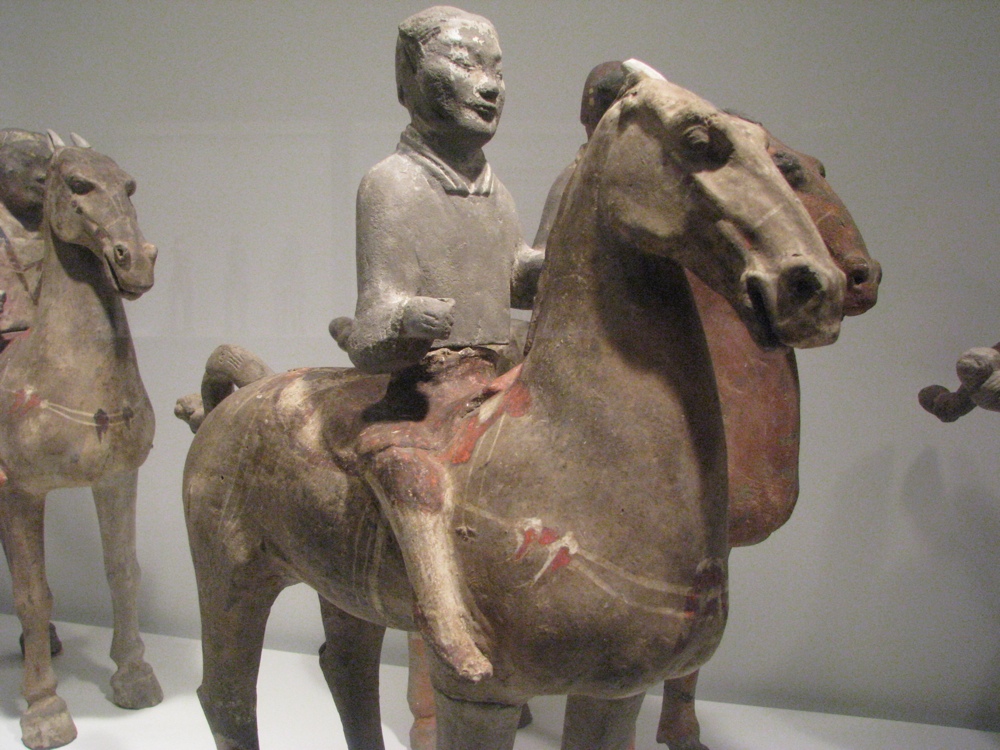
All this research leaves another mystery in its wake. After the First Emperor's death the rulers that came to power, the Han Dynasty, stopped building life-size sculptures, opting instead for miniature representations of people, animals and objects, Nickel said.
Several reasons could explain why the people stopped building these humanlike statues, Nickel said. For instance, the skills involved in building these sculptures were complicated and, by the time Han rulers started building large tombs again, the people who had these skills could simply have died.
But there is another idea, one hinted at by the "heavenly taboo" recorded by Ban Gu that "disaster" happens when foreign models are followed recklessly. To the ancient Chinese, the 12 giantstatues clad in foreign robes, and the Terracotta Warriors buried in pits, would have represented something unusual and foreign, Nickel said.
"Over all of Chinese early history sculpture did play only a minor role," Nickel told LiveScience in the interview. "To the Chinese it must have looked quite alien," he added. The Han rulers, wishing to repudiate the First Emperor and his foreign tastes, may have simply decided not to create life-sizeor largersculptures of their own, Nickel said.
Follow us @livescience, Facebook& Google+. Original article on LiveScience.

Owen Jarus is a regular contributor to Live Science who writes about archaeology and humans' past. He has also written for The Independent (UK), The Canadian Press (CP) and The Associated Press (AP), among others. Owen has a bachelor of arts degree from the University of Toronto and a journalism degree from Ryerson University.
